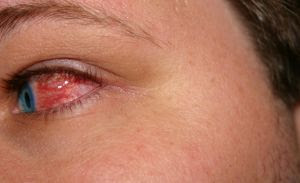It’s hard for most kids to suit in or feel “normal” in class, especially in high school. Being stricken with an unfamiliar disease may add to this sense of alienation. For kids who're afflicted with a medical condition that hasn’t obtained as much exposure as most medical issues, life in class can be two times as miserable. How can institutions and teachers help ease the academic life of children with a medical condition called uveitis?
It’s important, initially, to determine if the condition affects the student. When educators and university administrators know the signs and symptoms of uveitis, it will get rid of any quick judgments on the student’s ability to learn and abrupt reprimands for their behaviour. For instance, there is a possibility that a student who's unable to look at the formula on the board or even the pages inside a book isn’t just being lazy, or a student that insists on putting on shades indoors isn’t merely being wilful.
Instructors must endeavour to understand what is uveitis. Basically, it is an inflammation of the uveal tract and it affects one or several areas of the eye. The National Health Service (NHS) approximates that one in 4,500 individuals in England will likely be afflicted with the eye inflammation annually. Diagnosis is most common among individuals between the ages of 20 and 59, however children can be diagnosed too. Signs and symptoms, which vary according to the section of the eye that's afflicted, include blurry or cloudy vision, sensitivity to light, an aching red eye, small pupil, the iris having a slightly different colour than normal, seeing shadows that move through the field of vision (floaters), headaches, loss of peripheral vision, and seeing of flashing lights.
For students that have already been diagnosed, educators and schools are capable of doing a lot to assist the child. For pupils having light sensitivity, they can be motivated to put on shades or a hat whenever they’re outdoors. Indoors, the glare from the overhead lights can be lessened using yellow acetate on white paper. Photophobia, while lowering vision, can also cause pain.
In the classroom, educators can make a seat plan wherein students with the eye condition is right up front and near to the board. Organizations that focus on the eye inflammation even suggest for educators to use materials that provide additional contrast like coloured chalk on the board. Furthermore, the instructor could make particular alterations in the way he or she holds the lesson. Rather than having a book read loudly by the students, the educator may bring in an audio version of the book. Audio books not only develop the whole class’ hearing skills, but it also helps the student with the vision problem prepare for the book report or complete the reading assignment.
It's true that when one knows better, you do better. When institutions and instructors have a good knowledge of the eye condition by getting as much uveitis information as they possibly can, they’ll be much better equipped to understand the student and provide approaches to ease the child’s life in school.
Source: http://www.oliviasvision.org/ is the leading website that provides you with necessary information regarding uveitis.


No comments:
Post a Comment